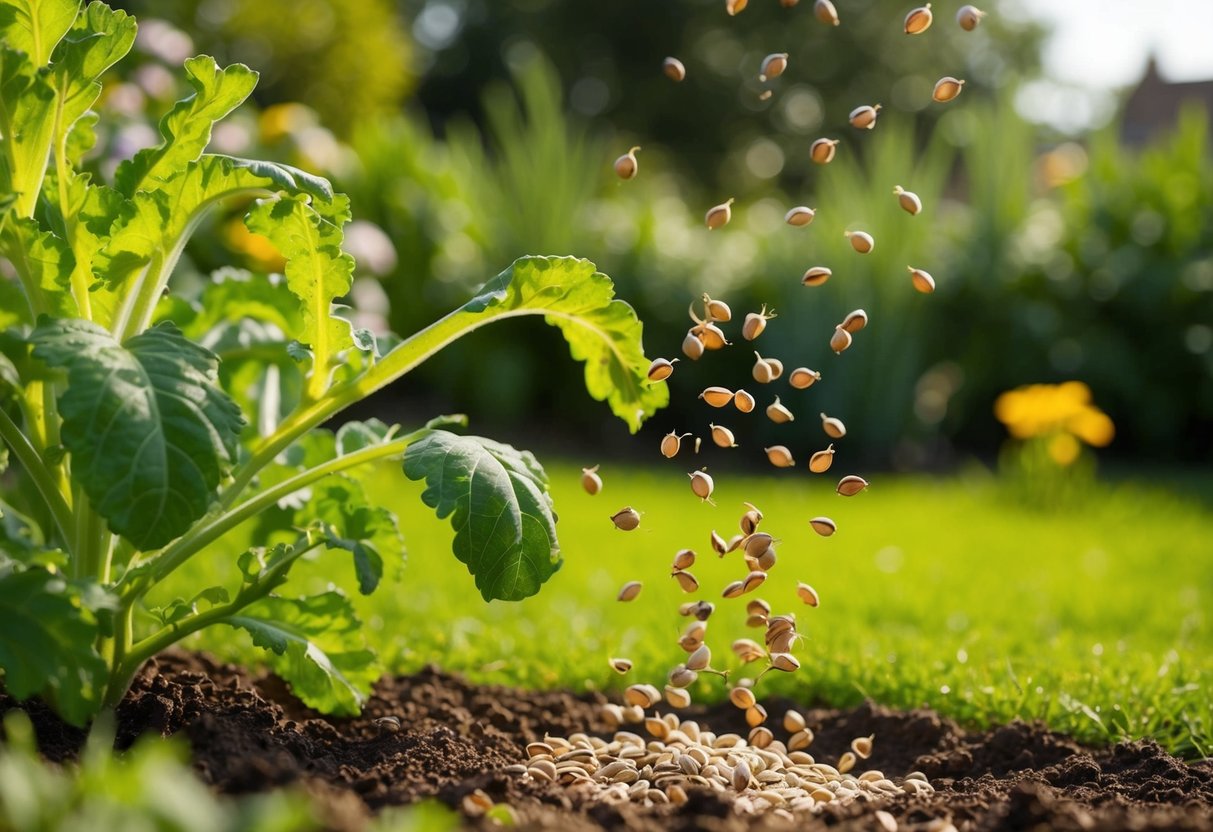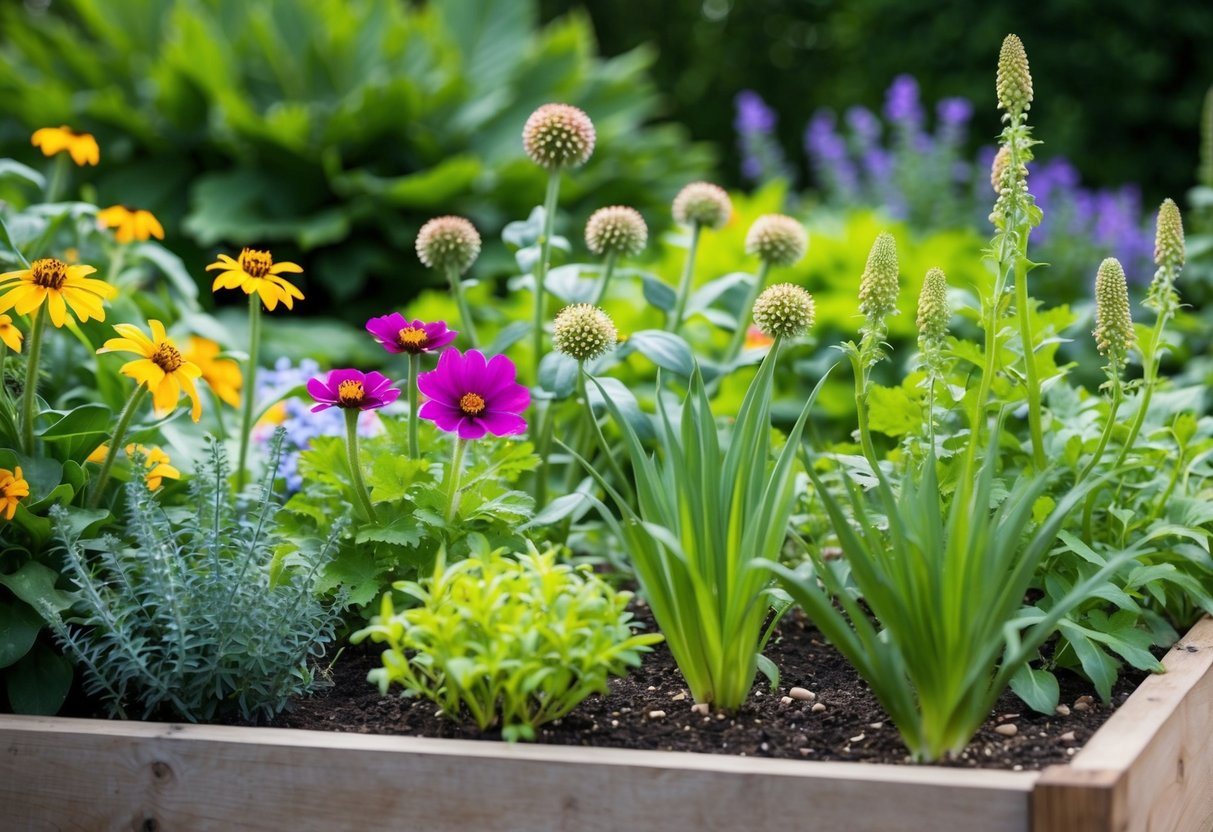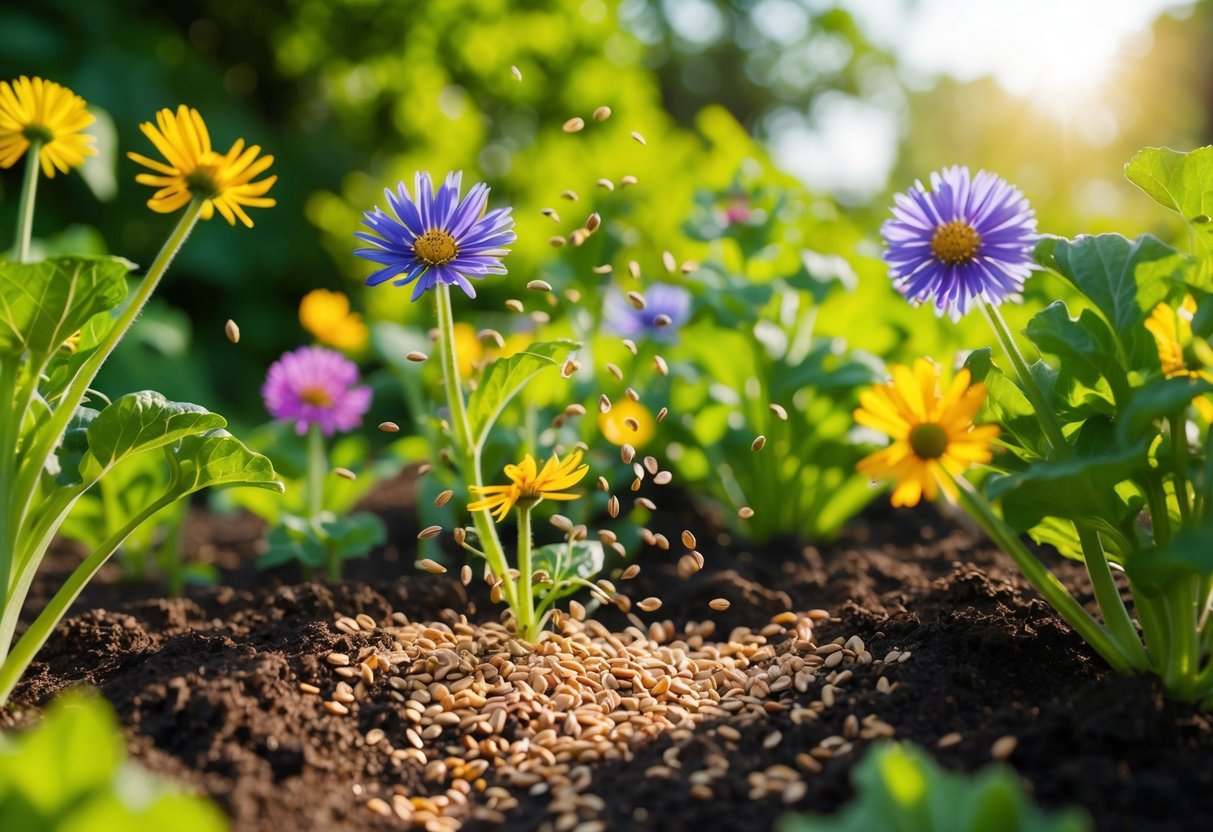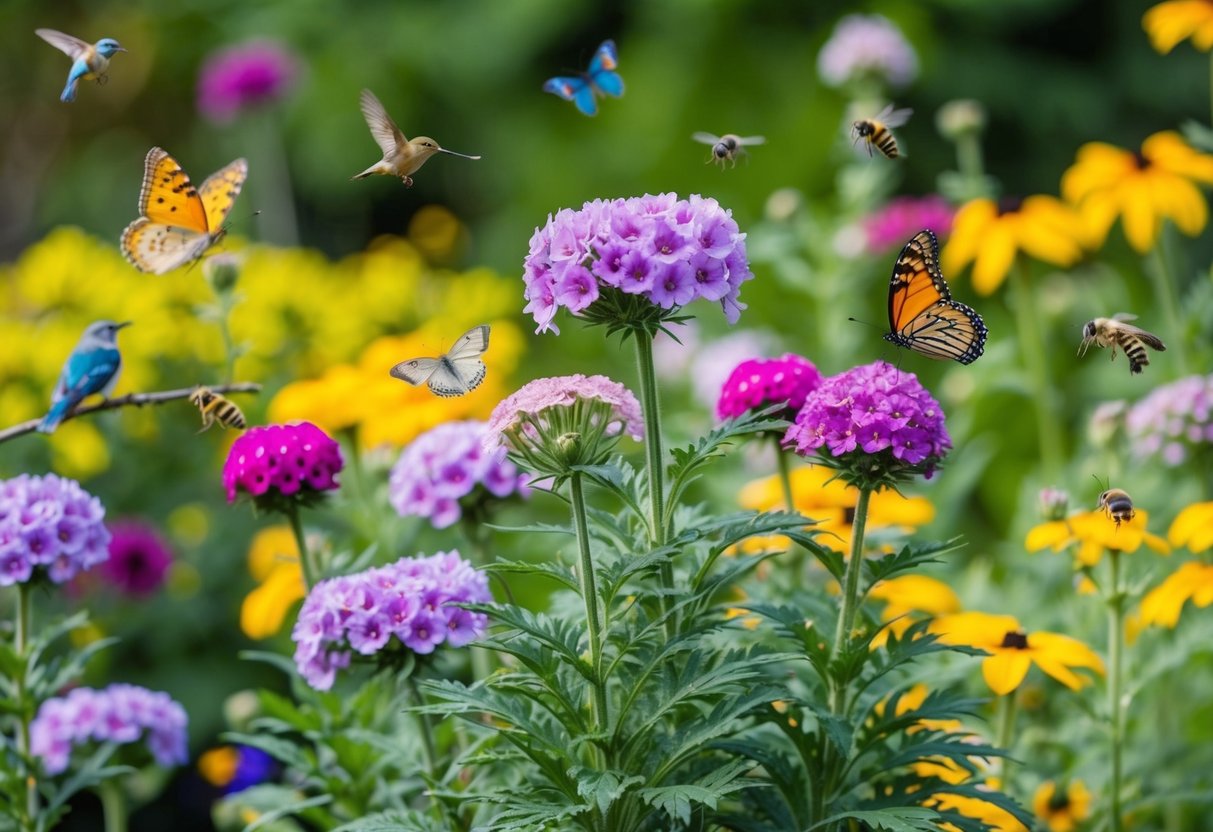Do Hardy Annuals Self-Seed? Discover Their Natural Propagation!
If you’ve ever planted hardy annuals, you might wonder if they’ll make a comeback the following year. These resilient plants are known for their ability to withstand cooler temperatures and add bursts of color to your garden. Some hardy annuals have the knack for self-seeding, allowing new plants to sprout from the seeds they drop.
This means that while the original plants may not survive past their growing season, you could still enjoy their beauty for years to come without replanting. This natural process happens when the seeds they produce find their way into the soil, ready to emerge when conditions are right.
Understanding which hardy annuals can self-seed will help you plan a vibrant, low-maintenance garden.
Imagine transforming your garden into a blossoming haven without constant replanting. By choosing self-seeding hardy annuals, you reduce the work needed to maintain stunning blooms. This effortless approach to gardening adds a bit of surprise each season as new flowers appear in unexpected spots.
Keep reading to discover which hardy annuals can bring your garden to life year after year.
Understanding Hardy Annuals

Hardy annuals bring vibrant life to gardens and are loved for their resilience. These plants endure cold temperatures and grow in diverse hardiness zones, making them a wonderful choice for many gardeners.
Defining Hardy Annual Flowers
Hardy annuals are unique because they complete their life cycle in one year. They germinate, bloom, and die in the same growing season. Despite their short lifespan, they can bring months of color and beauty.
These flowers are planted from seeds and known to self-seed, returning in some cases the following year. This means you can enjoy their presence annually without replanting every season. Besides their self-seeding nature, they tolerate cooler weather, which gives them an edge over other plants.
The Life Cycle of Hardy Annuals
The life cycle of hardy annuals is fascinating in its brevity and effectiveness. Beginning from seeds, they sprout during late winter or early spring. As they grow, they develop strong root systems, which support them through the season.
They reach full bloom by late spring or early summer, showcasing their colors. By fall, these plants mature, drop seeds, and the original plants die off. In suitable conditions, the seeds will overwinter and germinate anew next spring. This cycle gives gardeners the joy of seasonal renewal with minimal effort.
Hardiness Zones and Cold Tolerances
Hardiness zones are critical when planning to grow hardy annuals. These zones help you understand the climate conditions typical for your area. Hardy annuals thrive in zones where they can tolerate the lowest winter temperatures. They are particularly resilient in areas that experience frost, although they might need some protection in extremely harsh winters.
Many hardy annuals withstand cold well, emerging stronger even after unexpected frosts during early spring. In milder climates, these plants often return each year without much intervention, rewarding you with colorful displays that adapt to various environments. They can be a reliable choice for gardeners worldwide.
Self-Seeding Characteristics

Self-seeding plants can make gardening easy by naturally renewing themselves. If managed well, you can enjoy a flourishing garden with minimal effort. On the flip side, controlling where and how much they spread is key.
Basics of Self-Seeding
Self-seeding plants drop seeds that grow into new plants the following year. These seeds usually require no help from you to germinate. Gardens that use self-seeders often become vibrant as plants fill in spaces by themselves.
You often hear terms like self-sowers or self-sowing annuals related to this behavior. Coreopsis is a great example. It’s a hardy plant that comes back year after year in garden beds, brightening your space with its yellow blooms.
Benefits of Self-Sowing Annuals
Self-sowing annuals provide a continuous display of flowers. Once established, they require little maintenance, saving you time and money. Calendula is a self-seeder known for its bright, cheerful blooms that can attract pollinators like bees.
It also helps in maintaining biodiversity, offering homes for insects in your garden. Economically, these plants are a good choice as they help reduce the need to buy new ones each year.
Controlling Self-Seeding in the Garden
While self-seeders bring life to your garden, they can sometimes spread too much and feel unruly. You can manage their growth by deadheading, which involves removing spent flowers before they go to seed.
Creating barriers or edges in garden beds helps keep self-seeders in their desired place. In some cases, pulling out unwanted seedlings early can be effective. This way, you encourage beauty without chaos. Learning to balance naturally spreading plants will make gardening enjoyable and orderly.
Planting and Growing Hardy Annuals

Hardy annuals are perfect for adding vibrant colors to your garden. To get the best results, focus on the right sowing techniques and provide ideal growing conditions. Regular maintenance will help keep your plants healthy and thriving.
Sowing Hardy Annual Seeds
When planting hardy annuals, you can often direct-seed them into your garden. Spring planting is ideal after the last frost, but you can also plant in the fall in milder climates. Make sure to place seeds about an inch apart. This spacing gives them room to grow without needing immediate thinning.
Water the soil lightly after sowing to encourage seeds to germinate within a couple of weeks. Seedlings will appear once germination occurs. Keep the area weed-free to ensure young plants do not compete for nutrients.
Ideal Growing Conditions
These plants thrive in full sun, soaking up as much light as possible. Well-drained soil is crucial to avoid waterlogging, which can harm the roots. Amend the soil with compost if needed to improve drainage and fertility.
Regular watering is necessary, especially during dry spells. However, avoid over-watering to prevent root rot. A layer of mulch can help retain soil moisture and suppress weeds, keeping your plants flourishing.
Maintaining Your Hardy Annuals
Once established, your annuals need ongoing care to look their best. Thin seedlings to prevent overcrowding, leaving the strongest plants. This ensures each plant receives adequate sunlight and air circulation.
Use fertilizer occasionally to boost growth, but not too frequently. Trim any dead or damaged leaves to promote healthy regrowth. Keep an eye out for pests and diseases, addressing issues promptly to maintain plant health. Regular maintenance will help your hardy annuals continue to bloom beautifully throughout the growing season.
Popular Hardy Annuals for Your Garden

Hardy annuals are a delightful addition to any garden. They bring vibrant colors and can often withstand cooler temperatures. There are many beautiful varieties that you can choose from to enhance your garden’s aesthetic.
Highlighting Notable Varieties
Sweet peas are annual climbers with butterfly-shaped flowers that come in an array of colors. They need support to grow and can reach up to 1-2 meters. Love-in-a-mist is another attractive choice, known for its delicate blue or white flowers surrounded by a web of lacy foliage.
Snapdragons offer a colorful palette from pinks and oranges to yellows and reds. Their unique shape makes them stand out in any garden. Poppies have striking blooms that attract bees and add a pop of color with their bold reds and pinks.
Consider planting calendula for its bright yellow or orange blooms, perfect for a cheerful touch. For something taller, larkspur brings elegant spikes of blue or purple flowers. These varieties are great for creating a lively and diverse garden.
Designing with Hardy Annuals
When planning your garden, mix different heights and colors for varying textures and visual interest. Use taller plants like larkspur and snapdragons at the back of your garden beds, while shorter plants like sweet alyssum can fill the front.
Incorporate the vibrant blues of cornflower or bachelor’s button to contrast with warmer shades like marigolds. Placing bells of Ireland strategically can add vertical interest given their unique shape. You might enjoy a combination of cosmos and rudbeckia hirta for a daisy-like appeal.
Consider how these hardy annuals can complement each other, creating a garden that is both visually appealing and full of life. This approach will not only add charm but also help attract pollinators, making your garden more vibrant and thriving.
Attracting Wildlife with Annuals

Cultivating annuals in your garden not only adds beauty but also invites various forms of wildlife. Hardy annuals, in particular, attract essential pollinators and beneficial insects. These guests enhance your garden’s ecosystem by aiding in plant reproduction and pest control.
Hardy Annuals That Attract Pollinators
When you choose hardy annuals for your garden, you naturally invite pollinators like bees and butterflies. Plants such as coreopsis are a great choice because their bright blooms draw these helpful creatures. Coreopsis tinctoria, for instance, is known for its striking colors and is perfect for sunny spots in your flower garden. This plant is easy to maintain and blooms through frost, providing extended attraction.
Sweet peas are another option. Their vibrant colors and butterfly-like flowers make them a favorite. They climb with ease if you provide support like a trellis. These flowers not only look appealing but also offer nectar, ensuring that your garden stays lively with nature’s visitors. Gardeners value these flowers for their beauty and the life they bring to the blooming season.
The Importance of Beneficial Insects
Beneficial insects play a crucial role in maintaining a healthy flower garden. Predators such as ladybugs and lacewings help control pests like aphids, reducing the need for chemical sprays. Inviting these insects creates a balanced ecosystem, keeping your plants healthy.
Choosing self-sowing annuals can also help. Plants like tickseed attract beneficial insects while also enhancing your garden’s appearance. These flowers form clumps that provide shelter and food, ensuring the insects stick around. Their moderate growth rate means they require less maintenance, making your gardening experience more enjoyable.







